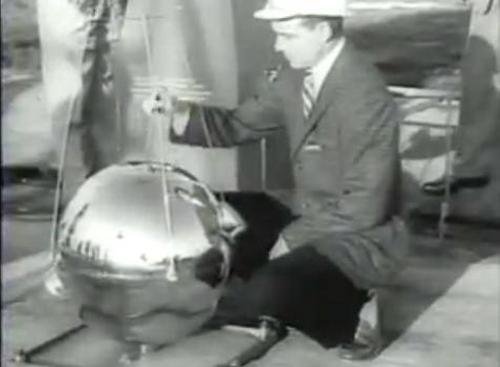
At long last, the Vanguard team has launched the satellite it had always wanted to. Vanguard II soared into orbit atop its 3-stage launcher yesterday joining four other satellites (three American, one Soviet) around the Earth. It is expected to orbit for the next 300 years.
The Navy and NASA have been trying for almost a year to duplicate their first success back in May 1958. Vanguard I was ridiculed by Soviet Premier Khruschev as a "grapefruit." Truth to tell, he wasn't far off. The first Vanguard did little more than duplicate the work of Sputnik I. On the other hand, the Vanguard project also entailed the building of Earth's first world-wide satellite tracking system as well as the development of the first purpose-built civilian booster.
Well, that booster finally got some good use this year. Vanguard II is much bigger (beachball-sized) than its ancestor. Moreover, the new satellite has been touted as the first "eye in the sky." There are two photocells located at the tip of two optical telescopes mounted inside the probe. Their mission for the next two weeks (the lifespan of their batteries) will be to detect reflections off of clouds in the Northern Hemisphere.

If that doesn't sound exciting to you, how about if I tell you that this is the first step toward bonafide weather satellites? Within a couple of years, we will have automated orbital observatories with a clear view of much of the globe at any given time. They'll be able to spot hurricanes, cold fronts, jet streams.. you name it. After a few years, they will accumulate enough data to revolutionize our climatology models and maybe even lead to large-scale weather control. Aside from communications (pioneered in December with the launch of Project SCORE), weather is the prime commercial use for satellites.
Even more nifty is the tape recorder set-up they've got in Vanguard. This allows the satellite to collect and store data for later transmission down to Earth. As Space Age as this sounds, rumor has it that this sophisticated system is about to be superseded by an all new, digital development. That will be an exciting story to break, when I can.
Another interesting tidbit, to me, is how the Vanguard team chose to moderate the temperature onboard the satellite. There is no air in space, so all heat is received and transmitted away by radiation, and not by the more-efficient methods of conduction and convection, as on Earth. Translation: it's hot in the sun and cold in the shadow, and there is no moderation by a surrounding medium. It is important that the satellite not absorb too much heat or too little. On the Pioneers, at least the first three, they had an alternating black and white paint scheme to address this problem.
Vanguard, on the other hand, is coated with powdered silicon monooxide as insulation underneath the shiny aluminum picked for maximum visibility. Inside, the satellite is gold-plated! I assume this is to conduct heat to the silicon monoxide shell. I wonder how much that cost.
The only disappointment is that Vanguard II is tumbling as it spins like a wobbly top. This is going to make interpreting the photoscanner data a challenge. Still, it's an exciting first step. The next few years are going to be incredible.
Back to fiction in two days. Thanks for all the well-wishes!
(Confused? Click here for an explanation as to what's really going on)
This entry was originally posted at Dreamwidth, where it has comments. Please comment here or there.

